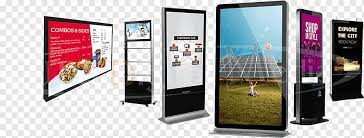
Digital Signage Comparison
Digital Signage Comparison is a form of electronic display that is used to show digital content, such as videos, images, and information. It is often used in public spaces, such as retail stores, restaurants, and transportation hubs, to display advertisements, menus, and other types of information. Digital signage can be used for a variety of purposes, including marketing, branding, and wayfinding.
Introduction:
Digital Signage Comparison There are many different types of digital signage systems available on the market, and they vary in terms of features, functionality, and cost. Some key factors to consider when comparing digital signage systems include the following:
- Display technology: There are several different types of display technology used in digital signage, including LCD, LED, and OLED. Each type has its own advantages and disadvantages, so it’s important to consider which one is best for your needs.
- Resolution: The resolution of a digital signage display refers to the number of pixels it has. Higher-resolution displays will have more pixels and therefore be able to display more detailed and higher-quality images.
- Size: Digital signage displays come in a range of sizes, from small screens that can be mounted on walls or desks to large, freestanding displays. Consider the size of the display that you need based on the location and purpose of the signage.
- Features: Some digital signage systems come with a range of features, such as the ability to display multiple screens at once, interactivity, and integration with other systems, such as point-of-sale systems. Consider which features are important to you and whether a particular system offers them.
- Cost: Digital signage systems can vary widely in cost, depending on the size, features, and technology of the display. Determine your budget and look for a system that fits within it.
It’s important to do thorough research and consider your specific needs before choosing a digital signage system. Comparing different systems and reading reviews from other users can help you make an informed decision.
What Is Digital Signage Comparison:
Digital signage comparison is the process of comparing different digital signage systems to determine which one is the best fit for a particular application or use case. Digital signage systems are electronic displays that are used to show digital content, such as videos, images, and information, in public spaces, such as retail stores, restaurants, and transportation hubs. They can be used for a variety of purposes, including marketing, branding, and wayfinding.
When comparing digital signage systems, there are several factors to consider, including the display technology, resolution, size, features, and cost of the system. It’s important to do thorough research and consider your specific needs before choosing a digital signage system, as the right system can help you effectively communicate with your audience and achieve your business goals. Comparing different systems and reading reviews from other users can help you make an informed decision.
What We Should Know About The Digital Signage Comparison:
Here are some things you should consider when comparing digital signage systems:
- Display technology: Different types of display technology, such as LCD, LED, and OLED, have different advantages and disadvantages. Consider which technology is best for your needs based on factors such as image quality, lifespan, and energy efficiency.
- Resolution: The resolution of a digital signage display refers to the number of pixels it has. Higher-resolution displays will be able to display more detailed and higher-quality images. Consider the resolution that you need based on the content you will be displaying and the distance from which it will be viewed.
- Size: Digital signage displays come in a range of sizes, from small screens that can be mounted on walls or desks to large, freestanding displays. Consider the size of the display that you need based on the location and purpose of the signage.
- Features: Some digital signage systems come with a range of features, such as the ability to display multiple screens at once, interactivity, and integration with other systems, such as point-of-sale systems. Consider which features are important to you and whether a particular system offers them.
- Cost: Digital signage systems can vary widely in cost, depending on the size, features, and technology of the display. Determine your budget and look for a system that fits within it.
- Ease of use: Consider how easy it is to use the digital signage system, including setting up and managing content. Some systems may have a more user-friendly interface or offer support resources, such as training materials and customer service.
- Reliability: Choose a digital signage system that is reliable and has a good track record of uptime. Consider the manufacturer’s warranty and customer support options.
- Scalability: If you plan to expand your digital signage network in the future, choose a system that is scalable and can easily be expanded with additional displays or content.
By considering these factors, you can make an informed decision and choose a digital signage system that meets your needs and budget.

If you want to get amazing benefits by using this link
Conference Room Schedule Display
Conclusion:
In conclusion, digital signage is a form of electronic display that is used to show digital content in public spaces, such as retail stores, restaurants, and transportation hubs. It can be used for a variety of purposes, including marketing, branding, and wayfinding. There are many different types of digital signage systems available on the market, and they vary in terms of features, functionality, and cost. When comparing digital signage systems, it’s important to consider factors such as display technology, resolution, size, features, cost, ease of use, reliability, and scalability. By doing thorough research and considering your specific needs, you can choose a digital signage system that meets your requirements and helps you effectively communicate with your audience.
